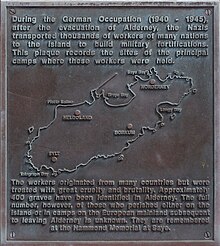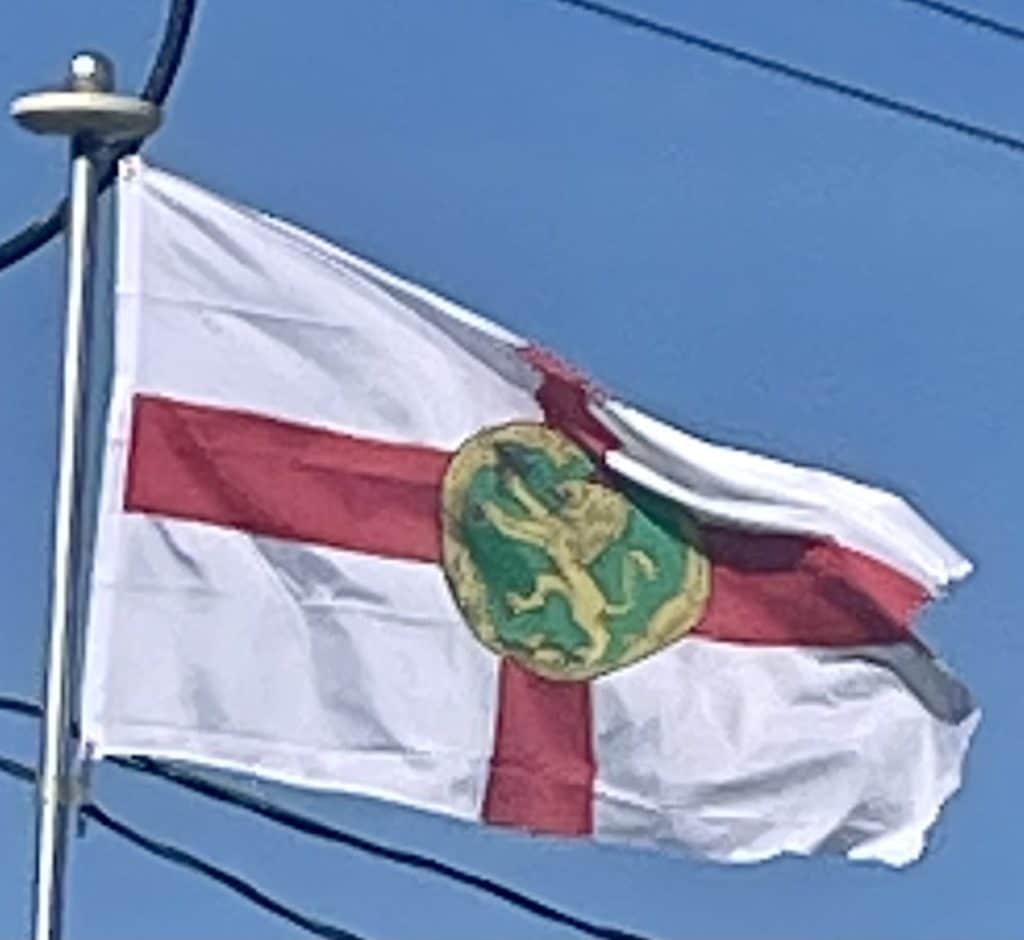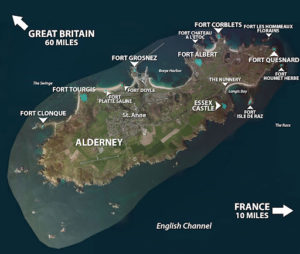

Alderney

The camps were built by the Nazi Organisation Todt (OT) to house the labour used to build fortifications including bunkers, gun emplacements, tunnels, air-raid shelters and other concrete and field fortifications. Lager Norderney, containing Russian and Polish POWs, and the Lager Sylt camp holding Jewish slave labourers, were transferred to SS administration in March 1943 under the control of Hauptsturmführer Maximilian List. There are 397 graves in Alderney, which when added to the men who died in ships, takes the total to over 700 out of a total inmate population of 6,000 who lost their lives before the camps were closed and the remaining inmates transferred to France in 1944.
On the return to their island, Alderney evacuees had little or no knowledge of the crimes committed on their island during the occupation, because by December 1945, the first date civilians could return home, all the slave labourers had been sent away and the majority of the German troops left behind were not senior staff. Evidence, however, was all over the island, with concrete fortifications and graveyards for the prisoners kept there during the occupation.
The Royal Navy blockaded the islands from time to time, particularly following the liberation of Normandy in 1944. Intense negotiations resulted in some Red Cross humanitarian aid, but there was considerable hunger and privation during the five years of German occupation, particularly in the final months when the Germans themselves were close to starvation. The Germans surrendered Alderney on 16 May 1945, eight days after the Allies formally accepted the unconditional surrender of the armed forces of Nazi Germany and the end of Adolf Hitler‘s Third Reich, and seven days after the liberation of Guernsey and Jersey. 2,332 German prisoners of war were removed from Alderney on 20 May 1945, leaving 500 Germans to undertake clearing up operations under British military supervision.

The people of Alderney could not start returning until December 1945 due to the huge cleanup operation needed simply to make the island safe for civilians. When the islanders returned home they were shocked to see the state of the island, with many houses completely derelict: the Germans had burned anything wooden, including front doors, for fuel. Archival and object evidence of the general evacuation in 1940 and the subsequent occupation of Alderney can be found in the Alderney Society Museum.
A series of tunnels also remain in place on Alderney, constructed by forced labor. These are in varying degrees of decay, being left open to the public and the elements.
Since 1945:
For two years after the end of the war, Alderney was operated as a communal farm. Craftsmen were paid by their employers, while others were paid by the local government out of the profit from the sales of farm produce. Remaining profits were put aside to repay the British Government for repairing and rebuilding the island. The local people resented being unable to control their own land; this led to the United Kingdom Home Office setting up an enquiry that led to the “Government of Alderney Law 1948”, which came into force on 1 January 1949. The law organized the construction and election of the States of Alderney and the justice system; and, for the first time in Alderney, the imposition of taxes. The legislature and judiciary were separated. The position of Judge, who had headed the island’s government since the resignation of the last Governor in 1825, was abolished, and the Jurats were removed from their legislative function.